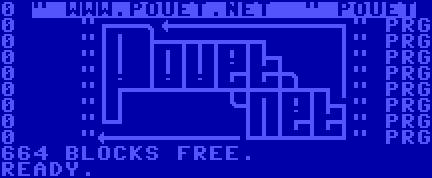Composition
category: general [glöplog]
I have seen 'composition' being discussed in the thread of the latest fr demo and have seen mentioned the 'rule of thirds'. After googling this and reading some pretty limited tutorials in relation to photography I am interested in this subject. Can anyone point me towards any good documents or books that deal with this subject from a design point of view? It's a subject I've never seen discussed in diskmag articles or anything of that nature.
Thanks
Thanks
I'm sure books on cinematography can be found in any public library. (Although cinematography also covers things like cameras, lenses, etc..)
I've often mulled the thought of writing such an article for a diskmag, but always reneged on the idea. My cinematography knowledge is pretty minimal and I feel sure that any such article would feature me putting my foot in my mouth on more than one occasion.
But some quickies:
Rule of thirds is tried-and-true generic framing concept. I think it originates from the renaissance. (Don't quote me on that.) It's a good way to create a sense of depth and dynamics between two subjects and is a fail-safe composition method when all else fails. Also great for landscapes and establishing shots.
Centering creates a dead frame. This kills on-screen dynamics but is useful for a close ups, insert shots, or perhaps a pause in action or beginning/end of a work. (eg. The end of a movie when the main character walks off into the sunset.)
Closed space is framing within a frame. And example could be an outside shot of a building at night, with one window lit up brightly and a silhouette of a person "framed" within that window. It gives a feeling of entrapment. (Could also be used for someone under a bridge, etc..)
Open space is when an object is larger than the frame. A popular example is the opening of the original 1977 Star Wars movie. The star destroyer is much larger than the frame and just keeps on appearing. It gives a sense of massive size.
Leading space is very important in communicating action that is off-screen. Imagine someone running from screen right towards screen left. Place them at the right of the screen with the rest of the empty frame in front of them. It gives the impress the subject is running towards some goal. Now, change the framing so the person is on the left of the screen, but still running in the same direction. The empty space is now behind the runner and gives the impression of being chased. (This would make more sense with a drawing, but I can't be bothered.)
Other things to think about are establishing shots, inserts, the 180 degree rule (aka director's line), three shots, and all sorts of none-traditional framing methods. Then there's camera movements, rack focus, blocking, blah blah blah...
Composition is a big subject and never an exact science. It's the director of photography's job to decide what methods will best convey the subject matter on screen and every person will do it differently.
I've often mulled the thought of writing such an article for a diskmag, but always reneged on the idea. My cinematography knowledge is pretty minimal and I feel sure that any such article would feature me putting my foot in my mouth on more than one occasion.
But some quickies:
Rule of thirds is tried-and-true generic framing concept. I think it originates from the renaissance. (Don't quote me on that.) It's a good way to create a sense of depth and dynamics between two subjects and is a fail-safe composition method when all else fails. Also great for landscapes and establishing shots.
Centering creates a dead frame. This kills on-screen dynamics but is useful for a close ups, insert shots, or perhaps a pause in action or beginning/end of a work. (eg. The end of a movie when the main character walks off into the sunset.)
Closed space is framing within a frame. And example could be an outside shot of a building at night, with one window lit up brightly and a silhouette of a person "framed" within that window. It gives a feeling of entrapment. (Could also be used for someone under a bridge, etc..)
Open space is when an object is larger than the frame. A popular example is the opening of the original 1977 Star Wars movie. The star destroyer is much larger than the frame and just keeps on appearing. It gives a sense of massive size.
Leading space is very important in communicating action that is off-screen. Imagine someone running from screen right towards screen left. Place them at the right of the screen with the rest of the empty frame in front of them. It gives the impress the subject is running towards some goal. Now, change the framing so the person is on the left of the screen, but still running in the same direction. The empty space is now behind the runner and gives the impression of being chased. (This would make more sense with a drawing, but I can't be bothered.)
Other things to think about are establishing shots, inserts, the 180 degree rule (aka director's line), three shots, and all sorts of none-traditional framing methods. Then there's camera movements, rack focus, blocking, blah blah blah...
Composition is a big subject and never an exact science. It's the director of photography's job to decide what methods will best convey the subject matter on screen and every person will do it differently.
